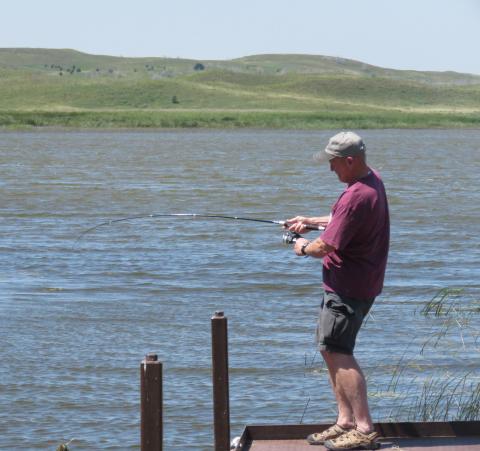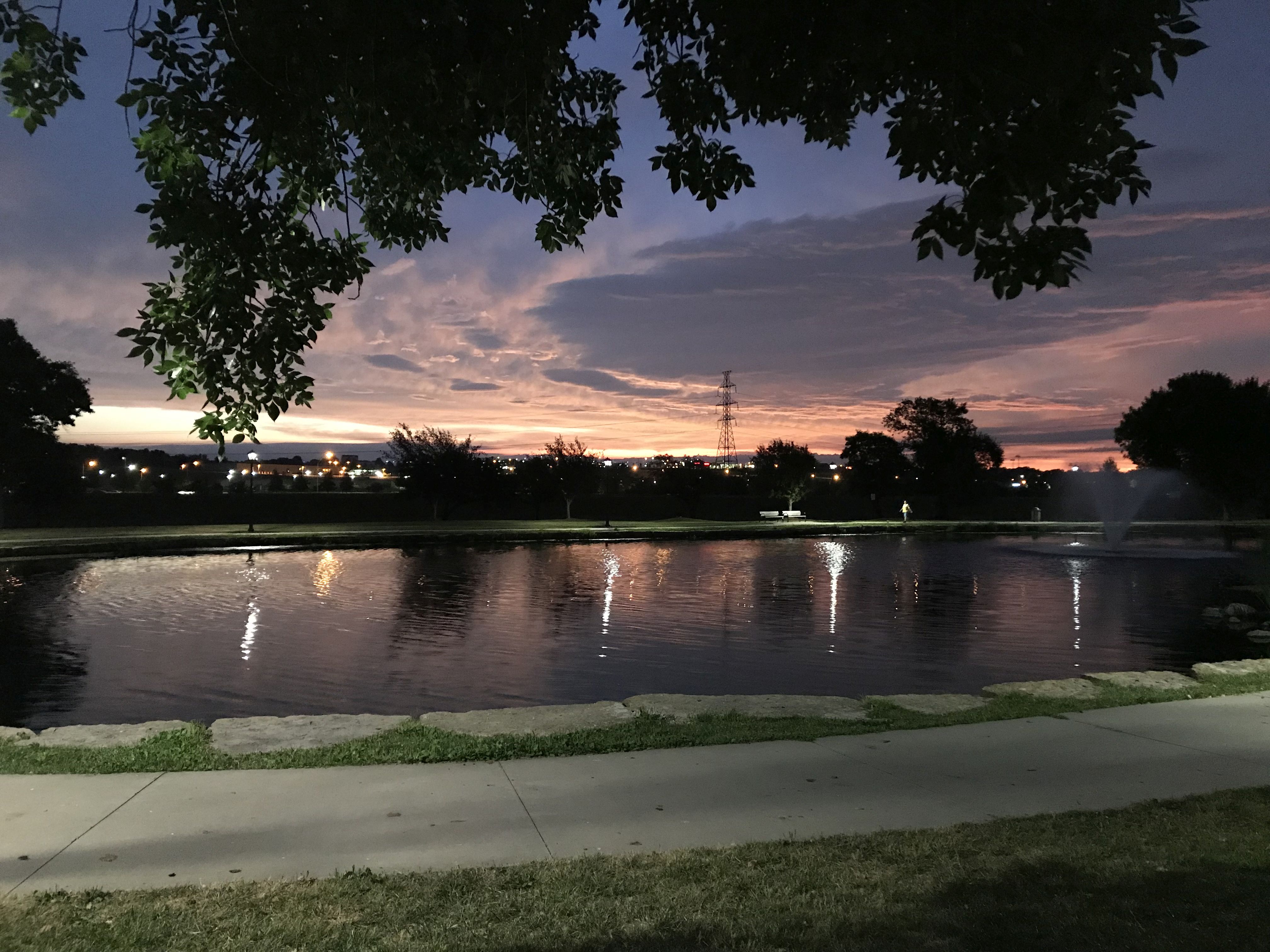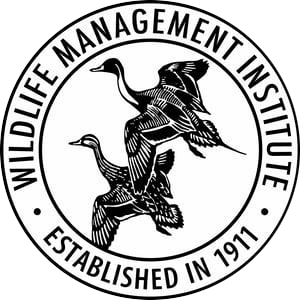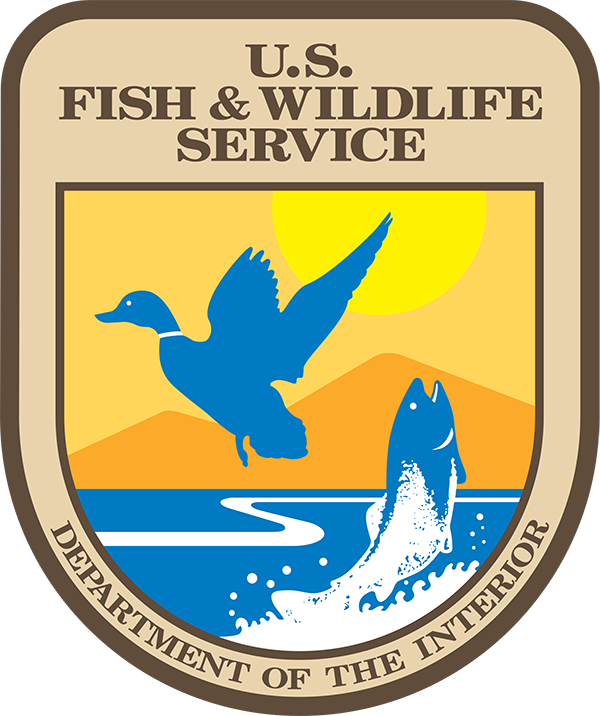Recreational angling, a billion–dollar industry, is the most influential factor structuring fish populations in inland systems. Given its importance and the reliance in North America on sportspersons to fund conservation activities (i.e., the North American Model of Wildlife Conservation), natural resource agencies invest substantial resources to manage angler-fish interactions to ensure long-term sustainability. Arguably, most of our current understanding and management efforts of recreational fisheries have been directed toward larger fisheries that are located in rural environments. These waterbodies are highly visible resources and often attract many anglers from long distances. However, we know less about anglers in urban environments and how they interact locally with smaller waterbodies. It is important to understand angler behavior in metropolitan areas because the distribution of people on the landscape is becoming more urbanized. We anticipate that urban fisheries function differently than their rural counterparts.
Goals
Project goals are to understand
- Participation patterns of anglers on multiple spatial and temporal scales
- Participation patterns of anglers’ influence fish populations and associated communities
- Management actions influence angler participation patterns and, in turn, fish communities
- Interactions and feedback mechanisms between and among angler groups and fish communities.
Current Status
The project currently has five study components.
1. Omaha Angler Survey. We planned to interview anglers on site at Benson, Flanagan, Fontenelle, and Walnut Creek from April through October 2020, but the COVID-19 pandemic prevented us from collecting angler behavior information. These interviews are intended to add to statewide angler survey data sets that are valuable for assessment of temporal changes in angler participation. In particular, these extended data sets allow for relational assessments of changes in angling participation with environmental conditions and management actions on large spatiotemporal scales.
2. Omaha Angler Effort. Anglers were counted at 22 public waterbodies in the Omaha metropolitan area from February 2019 through January 2020. Angler effort was highly variable with most angler effort occurring in west Omaha. Larger waterbodies typically received the most fishing effort. Angler effort generally peaked from May through July and remained low during winter months, likely given poor ice conditions. Most anglers accessed waterbodies from the bank rather than from a boat, which is typical of larger fisheries located in rural environments. Half of the waterbodies surveyed received more than 20,000 hours of angling effort with four of these waterbodies receiving more than 60,000 hours – comparable to some of our larger, rural fisheries in the state. Towl Pond and Halleck received the most angler effort per unit of area, with approximately 7,500 angler hours per acre. This magnitude of angler effort broke a previous record set at Bowling Lake in Lincoln, Nebraska.
3. Omaha Recreation Survey. We surveyed 2019 angler license holders in Omaha during February and March 2020 using mail-surveys (email and pre-paid envelopes) in collaboration with the University of Nebraska’s Bureau of Sociological Research. We intend to quantify visitation rates to the Omaha metropolitan waterbodies (and other prominent Nebraska reservoirs) during 2019, demographics, preferences and motivations, and information about their recreational budget (e.g., complementary or competing recreational activities to fishing). Data gathered in this study will be combined with historic data already collected by the Nebraska Cooperative Fish and Wildlife Research Unit (or the Nebraska Game and Parks Commission) and used to compare patterns in angler participation between urban and rural fisheries. This information may also be used to assess responses of anglers to periodic management actions (such as fish stockings).
4. Understanding Variation of Recreational Angler Effort. We aim to understand 1) the relationship between the size of waterbody (i.e., surface area) and annual angler effort, and if waterbody size can predict annual angler effort and 2) how cross-scale (seasonal, daily, hourly) patterns in angler effort differ between over- and under-fished waterbodies (i.e., waterbodies that receive more or less angler effort than predicted based on their size). We conducted angler counts at 69 waterbodies across the state of Nebraska between 2007 and 2019. We hope that a better understanding of cross-scale patterns in angler effort will highlight opportunities for managing angler effort, which is currently overlooked and rarely considered by most management and conservation agencies.
5. Recreational Use of Valentine National Wildlife Refuge. Valentine National Wildlife Refuge is an important social- ecological system that provides a variety of recreational opportunities for visitors. However, the types and frequency of activities that occur on the refuge and the sociodemographic characteristics of visitors are poorly understood. We used 789 completed surveys (from 2,251 distributed windshield surveys; 35% response rate) to understand the frequency, sociodemographics, and potential for social conflicts and ecological impacts of consumptive (i.e., hunting), intermediate- consumptive (i.e., fishing), and non-consumptive (i.e., wildlife watching, touring, hiking, photography, and environmental education) recreational-activity groups. The intermediate-consumptive group was the predominate recreational-activity group (78%) on the refuge from July 2017 to July 2018. Social and ecological intensities varied across lake types (e.g., fishing vs. non-fishing) and seasons, highlighting intense impact areas and periods on the refuge. Accounting for the diverse recreational activities and social and ecological intensities will allow managers of Valentine National Wildlife Refuge and other social-ecological systems the ability to concomitantly preserve ecological resources, prioritize conservation efforts, and minimize visitor conflicts. We hypothesized that perceptions of legitimate use of fish and wildlife would be predicative of the types of activities in which recreators choose to participate. We limited the study population to Nebraska anglers and assessed whether their position on the moral-extensionalism continuum would be predictive of their reported alternate activities. Anglers who also preferred to participate in hunting were dominated by the anthropocentric position on the continuum. Similarly, non-consumptive outdoor activities were dominated by the pathocentric position on the continuum. The results of this experiment suggest that certain individuals may be predisposed or restricted to certain outdoor activities based their environmental philosophies and perceptions of the use of wildlife.


Graduate Student(s)
-Brandon Barlow, M.S.
-Olivia DaRugna, M.S. (2020)
-Derek Kane, M.S.
Project Duration
January 2019 - December 2023
Funding
-Nebraska Game and Parks Commission
Project Location
Statewide Nebraska
Website




